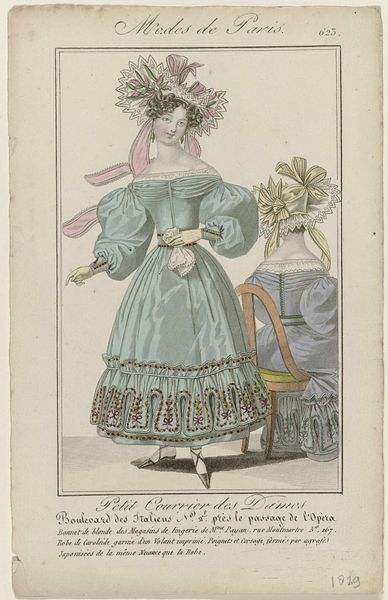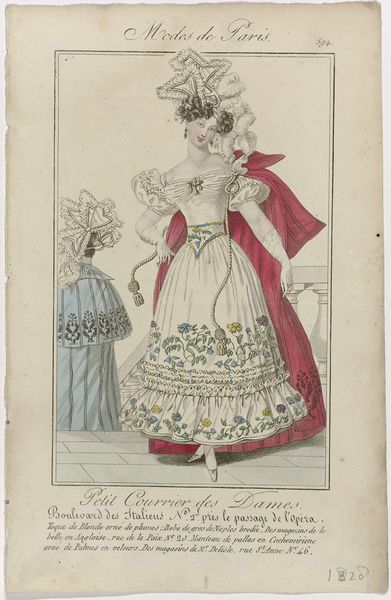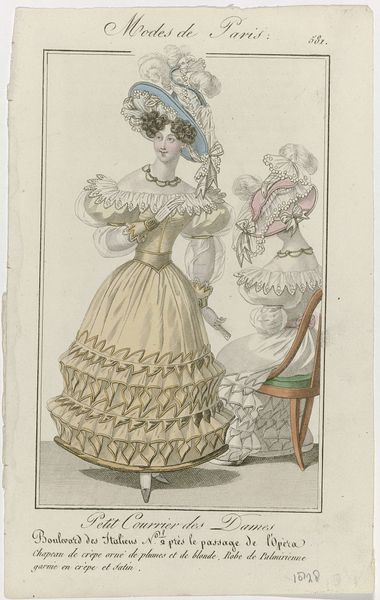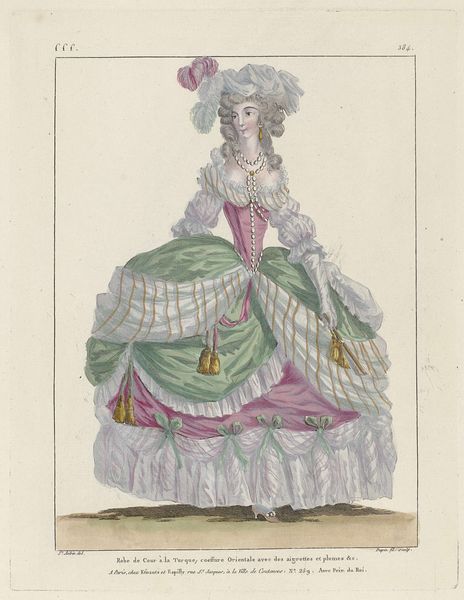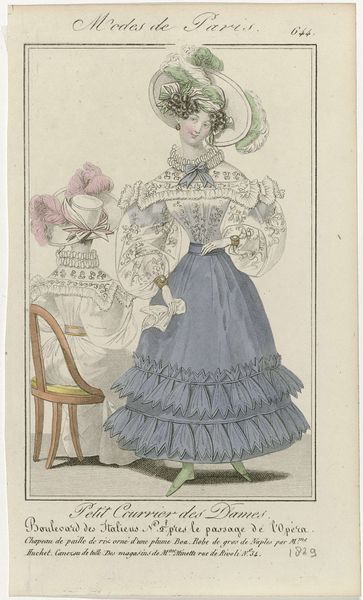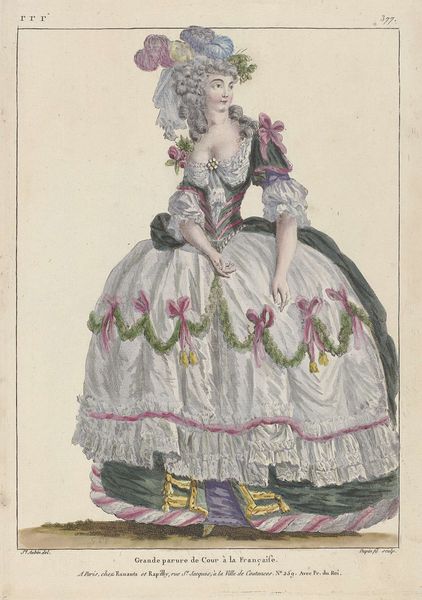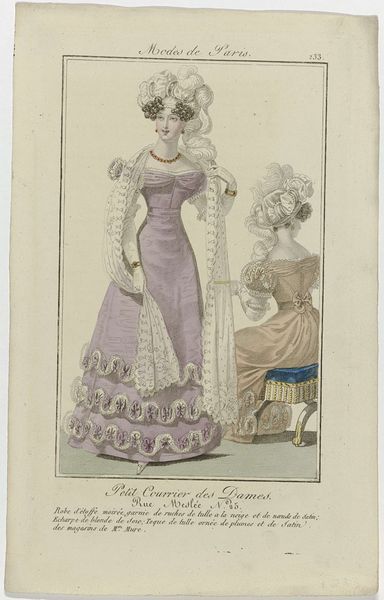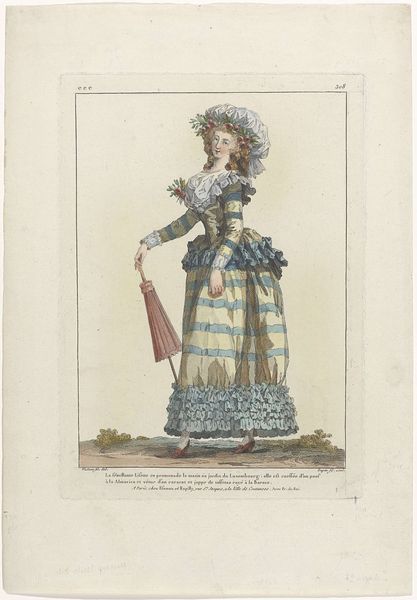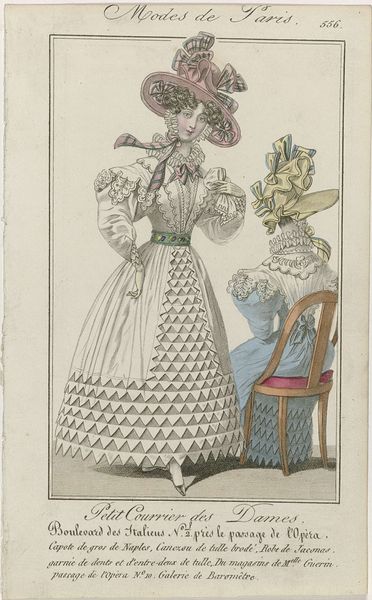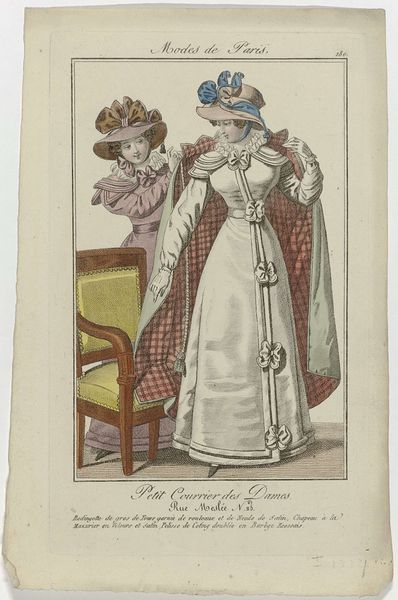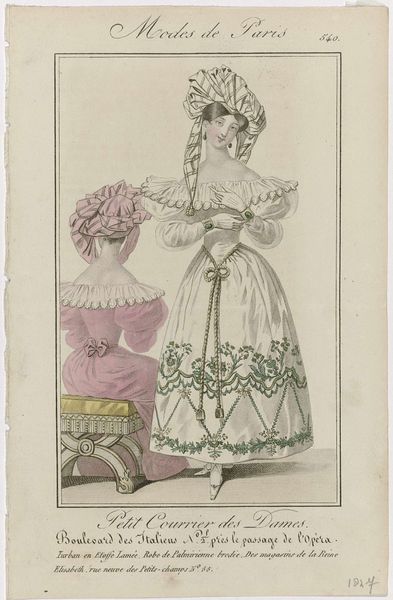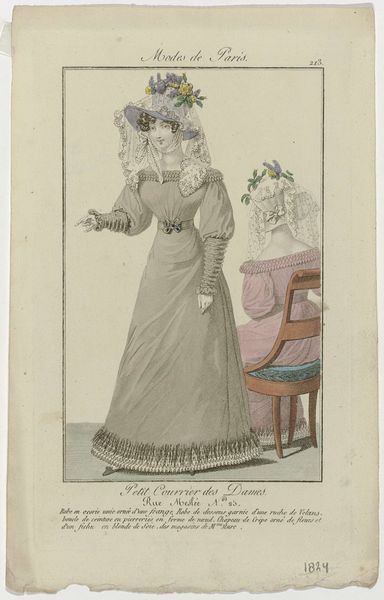
drawing, print
#
drawing
# print
#
romanticism
#
watercolour illustration
#
genre-painting
#
dress
Dimensions: height 241 mm, width 153 mm
Copyright: Rijks Museum: Open Domain
Curator: Let’s turn our attention to "La Mode, 1829, Pl. 4: Robe de Gaze de Smyrne brochée," a print and drawing piece dating from 1829, held here at the Rijksmuseum and created by Joseph Lemercier. Editor: Oh, my! That bonnet—it’s a flamboyant explosion of lace and floral accents. The overall feeling is one of delicate excess; all those ruffles, ribbons, and voluminous sleeves give the work a wonderfully Romantic feel. Curator: Indeed. The illustration is a product of its time. The Romantic era saw the rise of fashion periodicals aimed at elite women, who began exerting greater social power. These prints reflect that shift, focusing on personal expression and social identity, with clothing serving as an emblem of status. Editor: Speaking of emblems, let's consider how this garment’s various design elements enhance the subject. See how the tiny repeated floral shapes on the gown create rhythm and contrast with the bold puffed sleeves, adding subtle layers and surface complexity? The artist seems to be aiming at dynamism and variation while still trying to reflect its form in detail. Curator: Precisely! But such embellishments are only half the story. Beyond mere ornamentation, these garments dictated specific societal roles. Restrictions of movement due to cumbersome layers or prescribed behaviours became performative aspects for wealthy women in public spheres. The shawl here, seemingly casually draped, hints at both practicality and presentation. Editor: You're absolutely right to point out the material and societal significance! From a formal perspective, though, look at the composition: the frontal and rear views allow for comprehensive observation of design details from multiple viewpoints and let us appreciate their elegance and meticulous detailing, don’t you think? Curator: I agree it serves its direct purpose as an illustration, yes, but these visual cues reinforced particular notions of beauty, wealth and femininity for those aspiring to that status. Ultimately, artworks like this are relics of social practices now mostly confined to books and fashion houses, even if the societal pressures and expectations may still echo in present day contexts. Editor: An interesting reminder to reflect not only what we see, but also on why and how we interpret the visible elements. It reveals how closely intertwined fashion and society remain today.
Comments
No comments
Be the first to comment and join the conversation on the ultimate creative platform.
